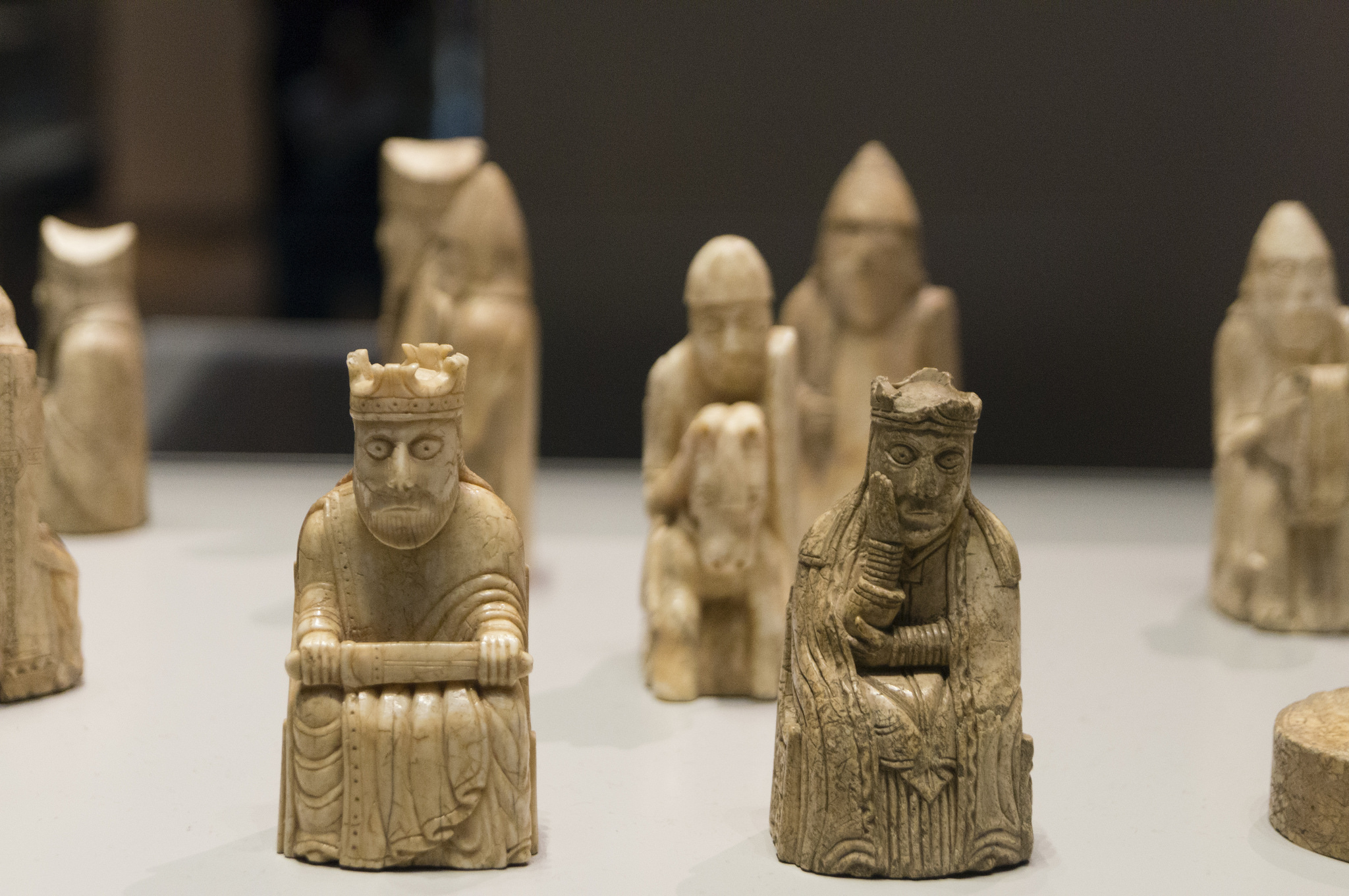Viking Chess

Historical Evidence of Viking Chess
Archaeological findings have uncovered a lot about the Viking love for board games. One of the most important discoveries was the Isle of Lewis Chessmen, found on the Isle of Lewis in Scotland. These finely carved chess pieces, made from walrus ivory, are thought to originate from the 12th century. The impressive skill and intricate design of these pieces highlight the cultural significance and broad appeal of such games in Viking culture.
Another important discovery is the Birka Warrior’s grave, often known as the “shield maiden’s grave.” In this burial site, alongside weapons and warhorses, archaeologists found a well-preserved gaming set. This indicates that strategy games were a meaningful aspect of a warrior’s lifestyle, potentially aiding in the enhancement of their tactical abilities. This finding illustrates the value placed on games in training warriors to think strategically.
The Salme Ship Burial
Off the coast of Estonia, the Salme ship burial provided further evidence of the Vikings’ enthusiasm for strategy games. In this burial site, a Viking leader was interred with 40 warriors. A chess-like game piece was placed in his mouth, symbolizing his high status and perhaps his strategic prowess. This unique discovery underscores the Vikings’ deep appreciation for board games, linking them with leadership and intellect. It demonstrates that Vikings valued strategic thinking not only in games but also in their everyday activities, battles, and governance. This connection between games and leadership abilities was a significant aspect of their culture.
The Role of Games in Viking Culture
In Viking society, games served as more than mere pastimes; they were tools for instructing and demonstrating strategic thought. Icelandic narratives frequently reference games such as chess, indicating their widespread use and significance in social and intellectual circles. These games required meticulous planning and foresight, skills crucial in both warfare and governance. Engaging in these games helped individuals refine their decision-making abilities, solve challenges, and lead effectively.
The Grágás laws from the thirteenth century, which helped Iceland become a Christian royal society, banned betting on these games. This rule shows that even though the games were very popular, people were worried they could cause fights, issues, and distractions. These worries led to strict rules to keep peace and order in society.
Vikings had a fondness for strategic games like dice and various board games. In the Salme ship burial off Estonia’s coast, a Viking leader buried with 40 fallen warriors had a king game piece in his mouth, telling his dynastic rank.
The Grágás laws of the thirteenth century, designed to facilitate Iceland’s transition into new Christian royal realities, explicitly prohibited spectators from gambling on such games. The Isle of Lewis Chess pieces, discovered in this Scottish region that had long been a Viking defense, provide further evidence of the Vikings’ interest in strategic games.
The famous “shield maiden’s grave” at the Birka Warrior site had weapons, horses, and a good game set. The Salme ship burial near Estonia’s coast showed a Viking leader buried with 40 warriors and a king game piece in his mouth, showing he was a king. Icelandic stories talk about chess-like games, and the old Grágás laws banned betting on these games. The Isle of Lewis Chess pieces, found in Scotland, a Viking area, also show they loved strategy games.






